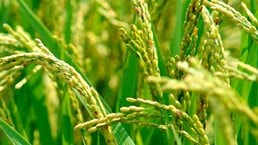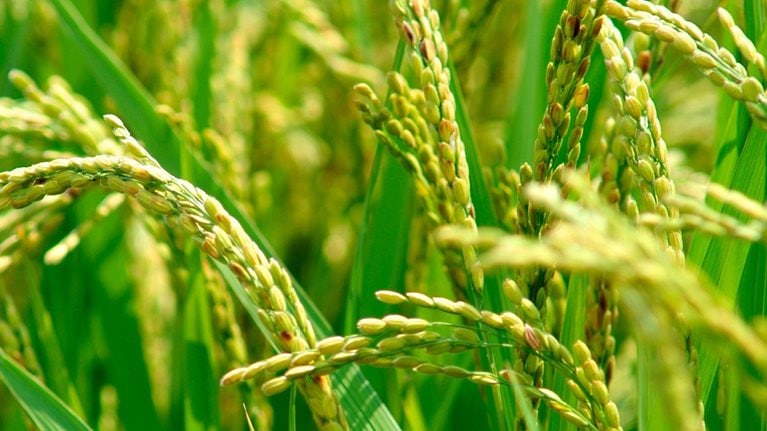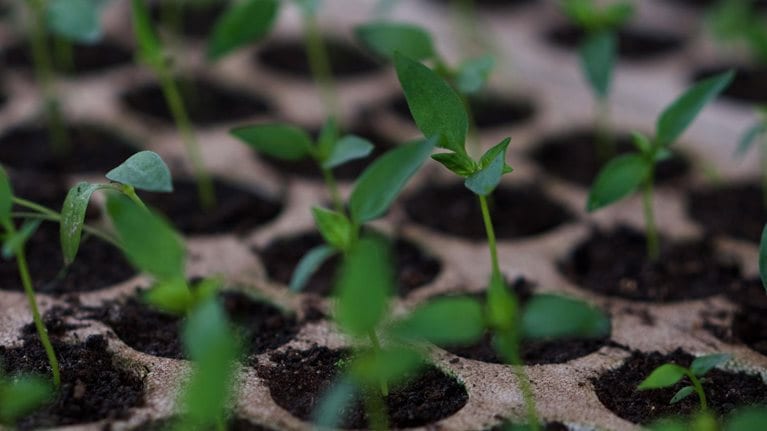Agriculture in Africa has a massive social and economic footprint. More than 60 percent of the population of sub-Saharan Africa is smallholder farmers, and about 23 percent of sub-Saharan Africa’s GDP comes from agriculture. Yet, Africa’s full agricultural potential remains untapped. In a recent analysis, we determined that Africa could produce two to three times more cereals and grains (Exhibit 1), which would add 20 percent more cereals and grains to the current worldwide 2.6 billion tons of output. Similar increases could be seen in the production of horticulture crops and livestock.

Building on three years of analysis and on-the-ground experience with agriculture in sub-Saharan Africa (see sidebar, “Methodology”), this article offers insights in two areas. First, we address findings from our analysis on where the opportunity for growth lies in African agriculture, looking closely at growth in different countries, land expansion, cost competitiveness, and farmer productivity. Second, we describe practical recommendations on the supply and demand sides for companies—both local and multinational—looking to grow in this high-potential but challenging market. Governments, investors, and development partners can also follow this guidance to support the private sector.
Where will agricultural growth in Africa come from?
Realizing Africa’s full agricultural potential will require significant investment. Sub-Saharan Africa will need eight times more fertilizer, six times more improved seed, at least $8 billion of investment in basic storage (not including cold-chain investments for horticulture or animal products), and as much as $65 billion in irrigation to fulfill its agricultural promise.1 Much investment will also be needed in basic infrastructure, such as roads, ports, and electricity, plus improvements in policies and regional trade flows (Exhibit 2). For the purposes of this article, we define sub-Saharan Africa as including all African countries except Algeria, Egypt, Libya, Morocco, and Tunisia. Unless otherwise specified, South Africa is not included in sub-Saharan Africa.

When we talked to companies considering investing in African agriculture, we encountered questions about what would spur growth in the sector, particularly regarding which countries to pursue, the role of land expansion, the potential for larger-scale farming, and overall cost competitiveness. We found that addressing these topics helped companies focus on the solutions that are mostly likely to propel growth in agriculture in Africa. We discuss these topics below.
A few countries will account for a significant portion of the potential
Analyzing productivity potential across 44 countries in sub-Saharan Africa showed that nine countries make up 60 percent of the total potential, with three countries—Ethiopia, Nigeria, and Tanzania—comprising half of that. While this potential is highly concentrated, the significant variation in agricultural development and policy on the continent means differentiated approaches are required for each market. The three highest-potential countries illustrate this variation well with respect to government involvement in agriculture, enabling environment, and factors such as improved input adoption (Exhibit 3).

Land expansion is unlikely to play a major role
We have heard repeatedly that Africa has large amounts of untapped agricultural land that could be used to increase production. Some estimates range from 480 million hectares to 840 million hectares.2 Recent analysis finds, however, that much of this land is in unreachable areas (because of a lack of infrastructure within countries and across regions), in conflict zones, under forest cover, or part of a conservation area. In fact, looking at dimensions such as market access, population density, and agroecological conditions suggests that only about 20 million hectares to 30 million hectares of additional cropland in sub-Saharan Africa, primarily in nine countries, is readily cultivatable today.3 This represents a 10 percent potential increase in Africa’s cultivated land. This amount could increase as new infrastructure investments make some inaccessible areas accessible.
While Africa continues to be highly targeted for large agricultural land deals, with more than 420 deals comprising ten million hectares completed between 2000 and 2016, few of the deals have gone into implementation,4 and the simple numbers suggest that land expansion will not be a major factor in increased production.
While the number of medium-size farms is rising, increased smallholder productivity will be the biggest growth driver
A global trend is that urbanization leads to consolidation of land sizes as people leave rural areas, allowing for more large-scale, mechanized farming. In some countries in Africa, there is, indeed, a rising class of five- to 100-hectare-size farms that have a growing share of the agricultural output.5 However, given the differing stages of development of the agricultural sector across the continent, this trend varies significantly by country. For example, in Nigeria, we found fewer than 100 farms larger than 50 hectares.
This suggests two primary categories of farmers emerging in sub-Saharan Africa. On one hand, there is a rising class of emergent farmers who often reside in cities, acquired their land later in life, and are relatively well educated. These farmers are typically already using inputs, have good access to market, and can influence agricultural policies in their countries. However, these farmers often fall into “a missing middle” and can have trouble obtaining access to loans or more sophisticated services to meet their needs. Many farmers in Zambia we interviewed, for example, had land sizes greater than ten hectares but struggled to secure sufficient financing to buy all the inputs they needed to farm their full plots. Financial institutions still considered them too small or risky. The larger farms in Nigeria—many of which were owned by individuals who sought to invest in agriculture after the oil-price drop in 2015 encouraged diversification in income sources—struggled to obtain the agronomic expertise and more sophisticated inputs required for them to achieve their productivity potential.
Would you like to learn more about our Agriculture Practice?
On the other hand, most land is still held by smallholder farmers with less than five hectares. However, if these farmers are to boost productivity, economic conditions in many regions must improve significantly. One striking example of this is that the return on investment (ROI) for smallholder farmers to use improved inputs in some countries can be nearly zero because of local variations in the cost of inputs and the price of outputs.
Even in areas for which the ROI is higher, smallholder farmers in sub-Saharan Africa may demand a higher investment threshold than their counterparts in other regions. This is because they lack the risk mitigations found in other regions that would make investments a safer bet. These include crop insurance, government welfare plans, guaranteed offtake, and even access to low-cost food for purchase that would allow them to focus on growing higher-value, nonfood crops versus crops for their own subsistence. In southern Tanzania, for example, smallholder farmers were aware of the yield benefits from using improved inputs and improved planting techniques, but marginal returns due to poor access to markets or low crop prices often made the investment unjustifiable. One consequence of this was that farmers would purchase fertilizer and hybrid seed only once every two to three years, choosing to save seed even with the resulting drop in yield.
Even so, some African countries are trying to consolidate some of the smallholder-farmer activity to increase productivity, provide market access, and reduce risk. These efforts include farmer aggregation through cooperatives, such as the Githunguri Dairy in Kenya, which serves close to 40,000 farmers in East Africa; “outgrower schemes,” such as for barley in beer production in Ethiopia; and nucleus farms, such as in Morocco’s Plan Maroc Vert.6
Overall cost competitiveness, not just yield, must improve
Rising urbanization and the growth of urban middle-class consumers in Africa could lead to $645 billion in growth in consumer spending between 2015 and 2025. Of that growth, $167 billion could be in food and beverages; a majority of that would come from sub-Saharan African countries.7 Urban consumers are expected to consume more fresh produce, dairy, meat, and processed food relative to their rural counterparts.8
This presents an opportunity and a challenge for African agriculture. Currently, sub-Saharan Africa imports $15 billion in food crops (grains, edible oils, and sugar), primarily from regions in Asia and South America.9 Imports are not necessarily a bad thing and, in fact, can play an important role in food security and sustainability, particularly when countries face constraints to production, such as land and water availability.
However, if African agriculture is to play a greater role in supplying local food demand (and even global food demand), it will be important to improve cost competitiveness for food crops compared with major trading partners. Sub-Saharan Africa has already demonstrated a competitive advantage in select cash crops, such as cashews, coffee, processed horticulture, and tea in East Africa and cocoa in West Africa. For some of these crops, such as cocoa, Africa has the lowest cost of production in the world. The same is not necessarily true for food crops, for which yield improvements alone are often not enough to improve cost competitiveness. Rice is an excellent example of this challenge (see sidebar, “The cost competitiveness of rice in Africa”).
How companies can pursue the African agricultural opportunity
While Africa’s agricultural potential is significant, unlocking it requires practical, on-the-ground effort and innovation. Given the continent’s diversity, a winning strategy for any company must first prioritize a few countries and value chains in which to place most resources, including personnel, investment dollars, and partnerships. Companies can pick these areas by disaggregating the growth potential and the enabling conditions across countries, value chains, and farmer types and then effectively prioritizing those areas based on the company’s own product or service offering and competitive advantage.
Choosing these few priorities well is particularly important, as we have found that it is difficult to replicate approaches across countries fully; therefore, the need for purpose-built strategies can quickly fragment resources if too many areas are pursued. We typically find that a handful of prioritized areas will provide most of the growth for any company on the continent.
Besides choosing priority areas, companies looking to invest in and expand their efforts in sub-Saharan African agriculture can follow seven lessons that touch on both supply and demand (Exhibit 4). These recommendations are most applicable to input players, but commodity traders and processors could adapt them for their use. For example, farmer engagement is still critical for traders and processors, but its importance is more in promoting quality and traceability in production rather than in creating demand for inputs.

Supply side: Innovate in route to market
Supply chains for agriculture in sub-Saharan Africa are fragmented. In analyzing major agricultural-input chains in eight countries, we found that inputs changed hands at least three times before they reached the farmer, moving from national importers to regional distributors to “agro-dealers” (which are typically small, rural shops). Of nearly 1,000 agro-dealers surveyed, 68 percent purchased from local distributors, and only 23 percent purchased directly from manufacturers.
On average, this fragmented supply chain led to a 20 to 50 percent markup over import price across major agricultural inputs, with about one-third to one-half of that captured as margin by the distributors and retailers in the chain (see Exhibit 5 for a Tanzania fertilizer example).

National and regional distributors are a source of value-added services, such as demand creation and credit extension. Interviews and survey analysis of distributors and agro-dealers suggest that, with some exceptions, these distributors rarely provide such services to the smallholder-farmer value chain, though they often do so to that of large-scale farmers.
The question is not deciding whether these intermediaries are good or bad. Very often, some of them (particularly those at the “last mile”) play an important role in extending access to rural areas. Instead, when looking at the supply side, companies should find ways to improve efficiencies to reduce costs to farmers and to provide value-added services through these channels.
We explore three ways companies could move to overcome these supply-side challenges.
Streamline and expand distribution
Given fragmented supply chains, companies have an opportunity to reduce costs and increase value by streamlining and expanding distribution. For input companies, this can mean gaining greater control of the distribution chain and holding more of the working-capital burden by maintaining ownership of inventory in rural aggregation points. In Tanzania, if fertilizer manufacturers were to invest in direct distribution to clusters of agro-dealers, that could yield a 10 to 15 percent cost reduction through savings on working capital and the decreased number of steps in the chain. Presuming this savings would be passed on to the farmer, this would improve the ROI for about 800,000 additional farmers, nearly twice the number of farmers estimated to be using fertilizer in the regions studied. Such a change could equate to more farmers buying fertilizer.
Improved distribution could also come through stronger partnerships with other input companies to share the costs of distribution and warehousing across the value chain, again relieving the burden on agro-dealers. The Last Mile Alliance in Tanzania, a partnership of Bayer, NMB Bank, Seed Co, Syngenta, and Yara, worked to establish agro-dealers in remote areas, using shipping containers as storage and building resources through training and demonstration plots.
Another approach could be incentivizing the existing distribution chain differently. In interviews with distributors and agro-dealers, we found that about 60 percent of them receive incentives in the form of volume-based discounts. But a look at the experience in consumer-goods businesses suggests that moving incentives from volume-based discounts toward those based on cross-selling with other products or expanding into underpenetrated areas could change behavior within the distribution chain to focus on expanding access and selling a more optimal product mix.
Some innovators are using digital solutions to provide streamlined and more reliable distribution for inputs and produce. For example, iProcure is a business-intelligence and data-driven stock-management company that uses data to support retailer fulfillment (with cost savings to current distributors). Another company, Twiga Foods, uses a mobile-based B2B platform to connect farmers directly to buyers of horticulture produce. It uses a network of collection points and delivery vehicles to distribute this produce efficiently.
These shifts in the distribution chain do come with challenges, though, including managing more complex logistics and payment collections from agro-dealers as well as taking on the risk of bad debts further down the distribution chain. Moreover, cost savings may be limited, given the infrastructure constraints in more rural areas. Therefore, this approach should be tailored to the structure of the local distribution chain. For example, direct distribution may make sense in some parts of a country or to some types of farmers, while having local distributors (with improved incentives) may be a better approach in others.
Explore more flexible payment terms
Nominal interest rates in sub-Saharan African countries are commonly above 20 percent—among the highest in the world—making access to working capital for small agro-dealers challenging and limiting their ability to purchase sufficient volumes of inputs. Longer payment terms are a cheaper mode of finance; migrating dealers to longer terms based on payment history can facilitate growth. In some cases, partnerships can be developed to mitigate the risk of default. For example, AFAP Partnership provided a first-loss guarantee to fertilizer suppliers to extend payment terms to agro-dealers in Tanzania, contributing to an approximately 35 percent increase in fertilizer sales.
Improve service to agro-dealers
Agro-dealers play a critical role as the last mile in the chain, often due to their knowledge of local farmers and the trust they engender in the community. In a survey of nearly 1,000 agro-dealers across four countries, we found that 30 percent of them provide some level of agronomic advice to farmers; 73 percent extended credit to at least some farmers (with one-third providing credit to 10 to 50 percent of their farmers).
Improving service to agro-dealers is therefore a key lever for agriculture-input companies to explore—and they can learn from other institutions in the agriculture value chain that are doing this well. Several banks in Kenya support high-performing agro-dealers to improve their farmer-service levels. Equity Bank Kenya and KCB Bank Kenya identify high-performing agro-dealers to serve as agents that offer financial services to farmers in their networks. While the average agro-dealer in Kenya reaches 600 to 1,000 farmers, Equity Bank Kenya works with high-performing dealers that are connected to up to 10,000 farmers, offering them preferential loan terms and access to accelerator programs with financial training and other incentives.
Demand side: Invest in farmer engagement through traditional and nontraditional methods
We found that most farmers in regions where companies had invested in demand-creation efforts were largely aware of the value of using improved inputs. For example, hybrid-seed-adoption rates in southern Tanzania—where effort had been made by private companies to build demand—were greater than 60 percent, versus a 20 percent average national hybridization rate. We also learned that farmers were well aware of the qualities of different brands in these areas. Nine of ten farmers we interviewed in southern Tanzania were able to explain the merits of different brands across inputs. In Kenya, our agro-dealer survey found that 43 percent of farmers name a specific brand when they come to purchase inputs.
This suggests that farmer engagement is critical. Yet, given the fragmentation of the farmer base in most of sub-Saharan Africa, it can be a daunting task. Private-sector companies could benefit from four demand-side approaches.
Better understand farmer segmentation
Farmers are not all the same. As mentioned, the ROI for inputs can vary significantly within a country, depending on market access, agronomic conditions, and other dimensions. However, we have observed that poor data often mean that companies use anecdotal information to make decisions about which farmers to target for demand creation as well as where to deploy their sales forces. This often engenders an overreliance on local distributors or traders.
With relatively simple methods such as SMS-based surveys, field visits, and interviews, companies can typically assemble a practical farmer segmentation that allows for better targeting of demand-creation efforts. In East Africa, we found that understanding whether a maize farmer was a “monocropper” (growing only maize) or an “intercropper” (growing multiple crops) made a difference in the type of maize seed they purchased. Monocroppers tended to be more risk averse and preferred to plant lower-yielding, shorter-maturity seed varieties. In a West African country, the relative age of a farmer’s cocoa trees was also a major factor in buying behavior. Yield reductions for cocoa trees older than 20 years offered farmers limited incentive to invest in inputs, versus that with trees between eight to 15 years of age. Younger trees were predominant in certain regions, suggesting that companies could better target demand-creation efforts in those places.
Tailor to local preferences and needs
Understanding local buying behavior, constraints, and preferences through segmentation can also allow companies to target farmers better. We have seen the emergence of smaller pack sizes for inputs to address more modest land sizes and to make it more affordable for farmers who cannot purchase larger packs. In East Africa, Yara has introduced 50- , 25- , and ten-kilogram bags for fertilizer. In Kenya, most maize-seed companies offer 25-, ten-, and two-kilogram bags. In Nigeria, we also saw crop-protection sachets as small as ten milliliters.
Branding that resonates can also make a difference. Seed Co, which calls itself “The African Seed Company” and has a large-scale presence across East Africa, uses African wildlife in its promotional materials to demarcate its different seed varieties.

Successful agricultural transformations: Six core elements of planning and delivery
Companies and governments alike should address the adulteration common in many markets, such as those where fertilizer mixed with sand, or refilling of empty bottles of branded crop protection with diluted product, has been known to happen. Stricter regulation and monitoring plays a critical role here, but companies are also adopting innovations to support the effort. For example, seeds sold by Pannar in Ghana are dyed red to show they are certified. One fertilizer company in West Africa put a clear plastic window on its bags so that farmers could see inside and know that the bag was unadulterated.
Companies should also consider targeted product innovations that meet local agronomic needs or consumer preferences. These include seed varieties that address local taste preferences (for example, preferences for parboiled versus fragrant rice in Nigeria) and tailored fertilizer blends. Because of long development or testing cycles, these innovations can be done in partnership. The Water Efficient Maize for Africa (WEMA) project is an example of one such partnership.
Once basic segmentation is in place, companies may consider evolving into more analytical and micromarket-segmentation approaches as they gather better data, have enough products in their pipelines, and have an efficient supply chain to differentiate which farmers and agro-dealers are demanding certain products.
Invest in a sales-force and promoter network, potentially through nontraditional partnerships
Capturing farmer demand is very much a ground game. One successful seed company in East Africa deployed networks of part-time promoters during planting season, model farmers with demonstration plots, promotions at market days, and simple branded giveaways, such as T-shirts. These efforts are often relatively low cost, using village-based promoters or lead farmers for promotions. They do, however, require strong operational management to ensure effective deployment.
Partnerships with development partners and nongovernmental organizations can help scale up demand-creation efforts, reducing the burden of managing a large field force. The partnership of the government of Ethiopia, DuPont Pioneer, and the US Agency for International Development in the Advanced Maize Seed Adoption Program (AMSAP) significantly increased maize-hybridization rates in that country. Africa’s growing agritech industry also provides scope for partnerships. For example, Syngenta has partnered with Arifu, which provides an SMS-based learning platform to farmers in Kenya and Tanzania, to provide agronomic services to smallholder farmers.
Innovate to address the farmer working-capital challenge
Given the fragmentation and challenges assessing creditworthiness, access to finance for farmers to purchase inputs (or hold on to outputs to sell when prices are higher) remains a challenge.
Organizations have innovated in this area. For example, One Acre Fund has provided financial products tailored to local farmer cash flows and behaviors to about 615,000 farmers. These are complemented by training and a field force working closely with farmers to ensure a 98 percent repayment rate.
Rising mobile-phone penetration and improvements in satellite and other forms of data communication also present another solution to this challenge. M-Shwari and Tala in Kenya use mobile-money transactions; voice, SMS, and data usage; and social connections to evaluate household creditworthiness and loan size. Organizations such as Apollo Agriculture and FarmDrive use remote sensing and satellite data to incorporate agronomic factors into their credit-scoring systems.
Private companies can consider partnerships with such organizations, which are innovating on the ground and can help address the working-capital challenge.
Understanding the sources of Africa’s agricultural potential and addressing the challenges preventing true expansion could increase production by two to three times what it is today. Making this a reality will require investment in inputs, infrastructure, and markets to open up the possibility of full participation by Africa’s millions of smallholder farmers in productive and commercial agriculture. While the challenges are many, relatively low–investment opportunities exist to innovate on route-to-market approaches along the supply chain. Demand-side farmer engagement, potentially in partnership with other ecosystem players, can help build markets to realize Africa’s significant potential.



